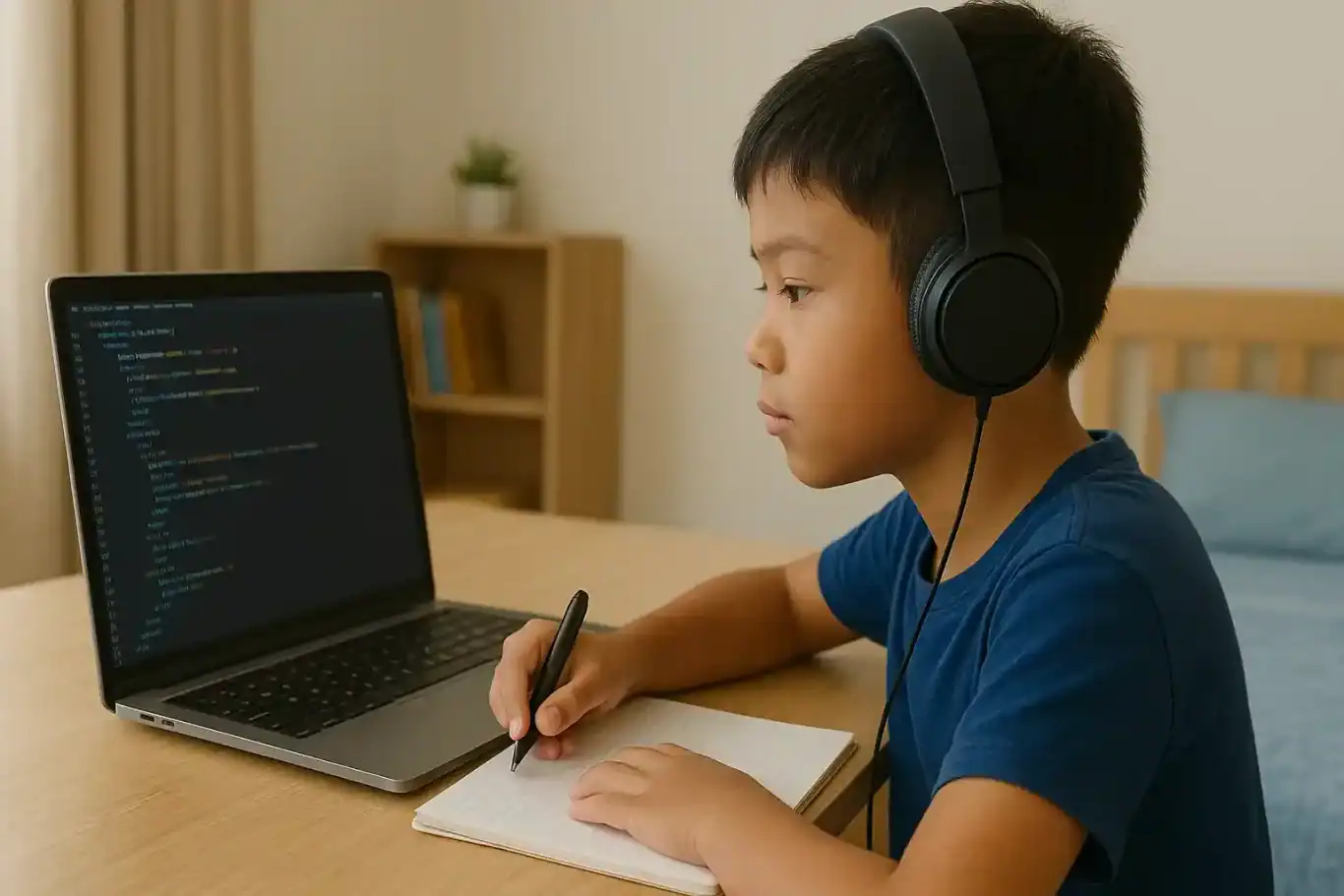7 Positive Impacts of Online Programming Classes for Beginners
In today’s digital era, programming skills have become one of the most in-demand abilities. Not only for those aiming to work in the tech field, but also as a valuable foundation to face modern challenges. By joining an online programming classes for beginners, kids and teens can learn logic, systematic thinking, and creativity in solving problems.
Many parents still hesitate whether their children are ready to start programming lessons. In reality, the earlier they get introduced to programming, the greater their chances to grow into creative and innovative individuals.
1. Flexibility to Learn Anywhere

One of the main advantages of an online programming classes for beginners is its flexibility. Kids don’t need to travel to a specific course location. With just a laptop or tablet, they can learn from home, the library, or even while traveling. This helps parents manage their child’s schedule without interfering with school or other main activities.
2. Beginner-Friendly Curriculum
Many parents worry that programming is too difficult to understand. However, in an online programming classes for beginners, the curriculum is designed step by step. Children are introduced to basic concepts, such as simple logic, building small programs, and even creating simple games or applications. This approach builds confidence and motivates them to keep learning.
3. Enhances Problem-Solving Skills

Every programming lesson encourages students to find solutions to challenges. By joining an online programming class for beginners, kids will get used to facing obstacles, trying different methods, and not giving up easily. This problem-solving mindset is useful not only in technology but also in their daily lives.
4. Fun and Interactive Learning
Many programming programs for kids combine game elements with learning. For example, they can create simple games or fun animations. This makes online programming classes for beginners enjoyable. Children don’t feel pressured—instead, they have fun with interactive and engaging lessons.
5. Preparing for Future Careers
With rapid technological growth, the demand for digitally literate talent keeps rising. By joining an online programming classes for beginners, kids gain valuable skills for their future. Whether they dream of becoming programmers, game designers, or digital entrepreneurs, these skills will always be relevant.
6. Boosting Children’s Creativity

Programming is not just about numbers and codes—it’s also about imagination. In an online programming classes for beginners, kids are encouraged to turn their creative ideas into reality, such as interactive apps or animations. This nurtures their creativity and builds self-confidence.
7. Building Discipline and Responsibility
Online classes still require commitment. Kids must learn to manage their study time and complete assignments. Through an online programming classes for beginners, they develop discipline and responsibility for their own learning process. This positively contributes to their character development.
The Role of Parents in Supporting Kids
Even though children join an online programming classes for beginners, parents still play an important role. Moral support, screen-time supervision, and encouragement can boost their motivation. Parents can also track their kids’ progress by observing the projects they create during the lessons.
Why Choose Timedoor Academy?
Timedoor Academy offers online programming classes for beginners specially designed for kids and teens. With experienced instructors, interactive curriculum, and fun teaching methods, Timedoor Academy is the right choice for parents who want to invest in their child’s education.
A Great Investment for Children’s Future

Ingin tahu detail program?
Joining an online programming classes for beginners is not only about learning technology but also about building essential life skills. Kids learn discipline, creativity, and resilience in facing challenges with a positive mindset. All these benefits serve as valuable assets for their future.If you want your child to have a meaningful yet enjoyable learning experience, register them now at Timedoor Academy. Schedule a free trial class and let them experience the excitement of learning programming from an early age.